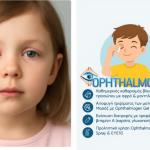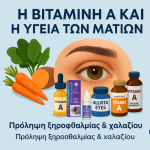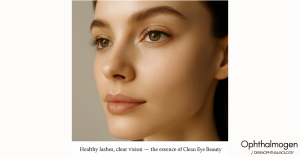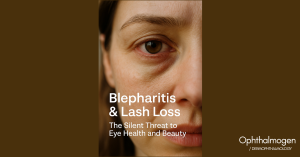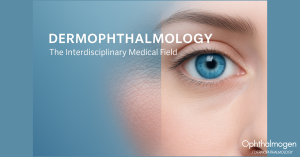
Introduction
Menopause marks a natural transition in every woman’s life, bringing changes that affect not only overall health but also eye health. The sharp drop in estrogen and gradual decline in androgens significantly influence the tear film, particularly the lipid layer produced by the Meibomian Glands.
Studies confirm that postmenopausal women have a much higher prevalence of dry eye disease and Meibomian Gland Dysfunction (MGD) – the two leading risk factors for chalazion.
How Menopause Leads to Chalazion
- Hormonal imbalance
–Androgens → reduced lipid secretion
–Estrogen → increased inflammation in the ocular surface
- Meibomian gland dysfunction (MGD)
–The lipids become more viscous.
–They obstruct the glands, leading to inflammation.
- Chalazion formation
–Blocked gland + inflammation = localized eyelid lump (chalazion)
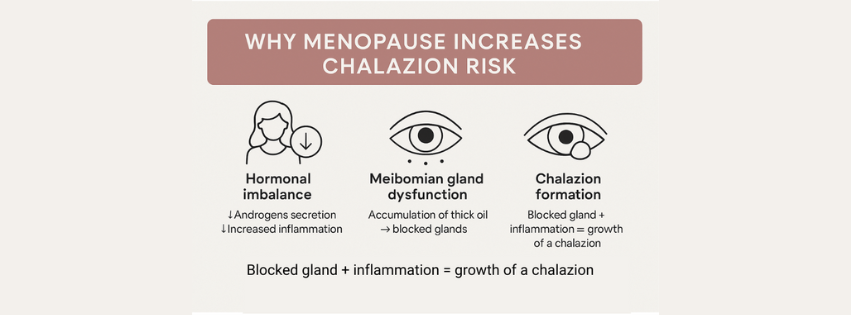
Blurred Vision in Menopause – Why It Happens
Many women report blurred or unstable vision, mainly during the day.
This is due to::
- Instability of the tear film caused by reduced lipids → tears evaporate more quickly.
- Dry eye, which causes intermittent focusing and eye fatigue.
- Inflammations from Demodex and MGD that alter the smooth surface of the cornea.
Blurred vision is not just a nuisance, but also a sign that the eyes need systematic care.
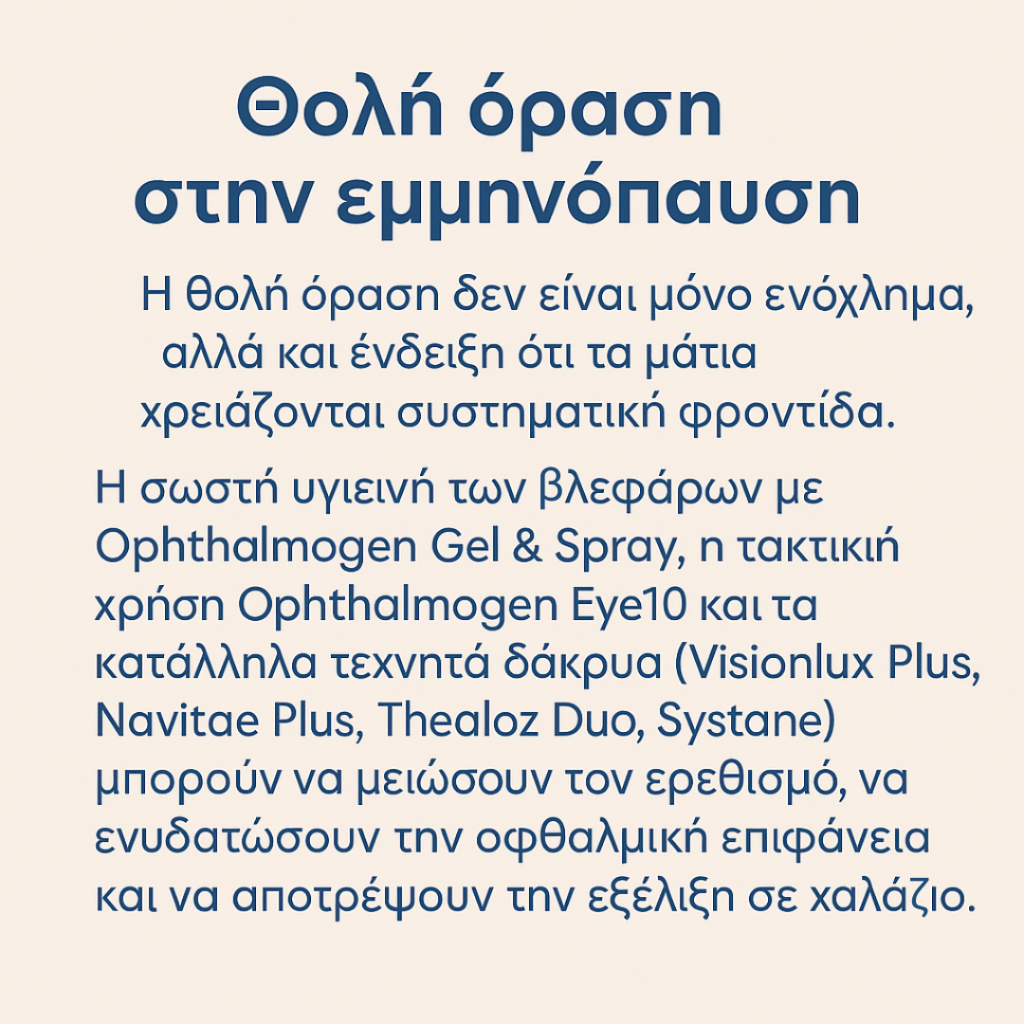
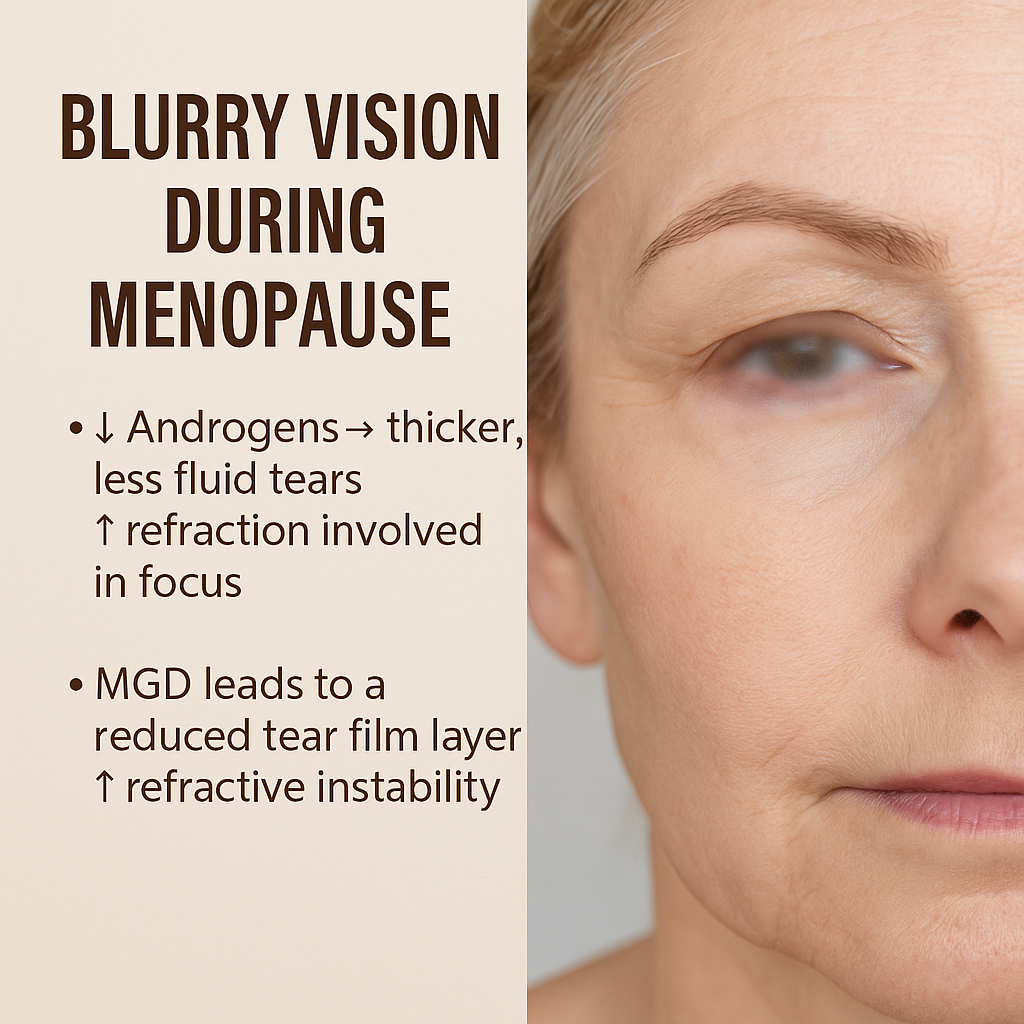
The Impact of Hormone Replacement Therapy (HRT) on Eye Health
Many women in menopause undergo Hormone Replacement Therapy (HRT) to alleviate their symptoms.
While HRT can relieve systemic menopausal symptoms, it may also affect the eyes:
- Exacerbation of dry eye disease.
- Alterations in intraocular pressure.
- Increased susceptibility to blepharitis and gland obstruction.
Regardless of HRT use, eyelid hygiene and preventive care become essential habits to protect long-term ocular health.:
- Eyelid cleansing with Ophthalmogen Eyelid Foam, Naviblef.
- Eyelid massage with Ophthalmogen Gel to eliminate microbes/Demodex.
- Thermotherapy with Ophthalmogen Eye 10 to maintain gland patency.
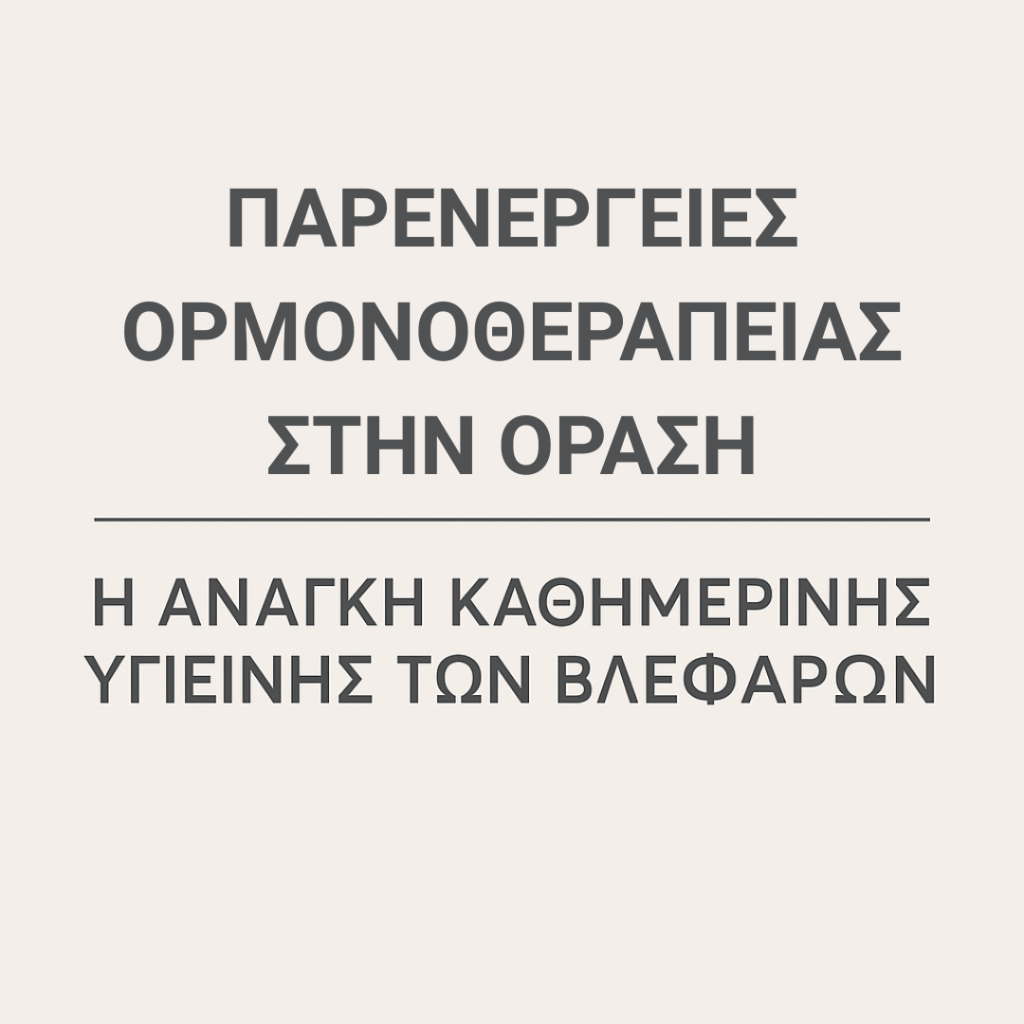
Prevention & Treatment Strategy
A. Daily Eyelid Hygiene
The #1 habit for women in menopause
- 20 minutes daily help liquefy the viscous meibum.
- Keeps the Meibomian glands open.
- Prevents the development of chalazion and reduces dry eye symptoms and ocular redness.
B. Eyelid Massage with Ophthalmogen Gel
- Applied immediately after Ophthalmogen Eye10.
- Not rinsed off – remains on the eyelids for prolonged action.
- Reduces microbial and Demodex load.
- Provides hydration, soothing, and relief.
Γ. Ophthalmogen Spray
- Daily application, morning and evening.
- Disinfects and reduces microbial load without causing irritation.
- Ideal for women who wear makeup, as it does not affect cosmetic application.
- Can also be used throughout the day for freshness and hydration.
D. Artificial Tears
- Visionlux Plus, Visionlux Plus DUO → hydration, vitamin B.
- Navitae Plus → hyaluronic acid + vitamins A & E.
- Thealoz Duo & Systane → international options with antioxidants.
- Refresh Tears, Tears Naturalle, Luxyal Plus, Oftalia → daily-use options.
E. Vitamins & Supplements
- ALLVITAEYES → supports ocular health.
- Ocuvite, PreserVision, MacuSave → antioxidants for macular protection.
- Immunix3, Ester-C, Solgar Vitamin C → immune system support.
HealthAid Vitamin A & D → supports ocular surface integrity.
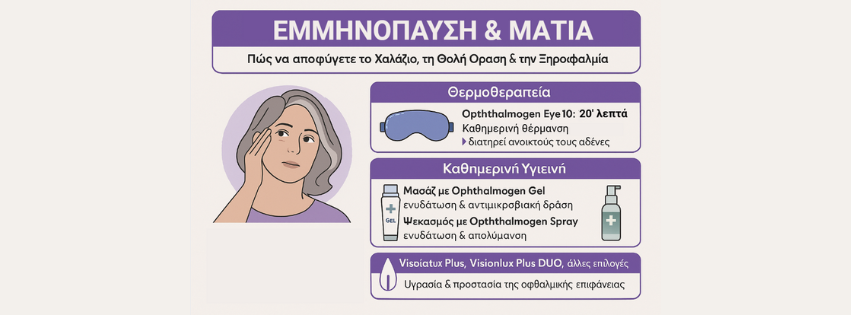
Annual Medical Maintenance
– Meibomian Gland Expression with Ophthalmogen Meibo Evacuators.
– Preventive assessment of the tear film.
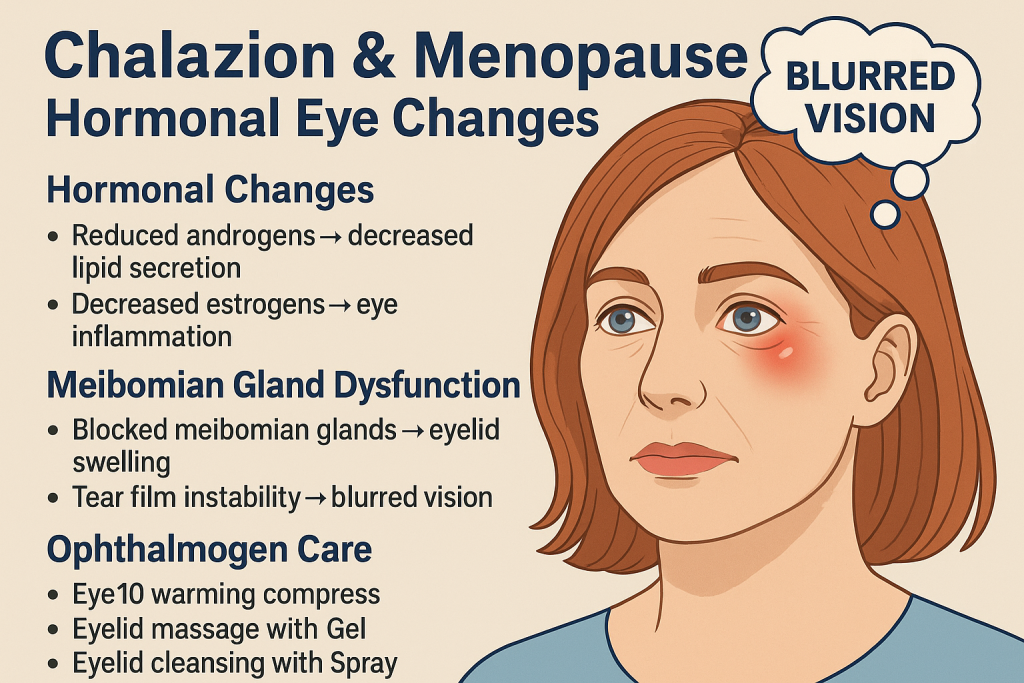
Conclusion
Menopause brings hormonal changes that disrupt the lipid layer of tears, making women more vulnerable to dry eye, blurry vision, blepharitis, and chalazion.
A holistic approach – combining daily eyelid hygiene, Ophthalmogen Eye10 thermal therapy, Ophthalmogen Gel & Spray, artificial tears, and nutritional supplements – provides both prevention and effective management.
By making eyelid care a daily habit, menopausal women can protect their eye health, maintain clear vision, and reduce the risk of recurrent chalazion.
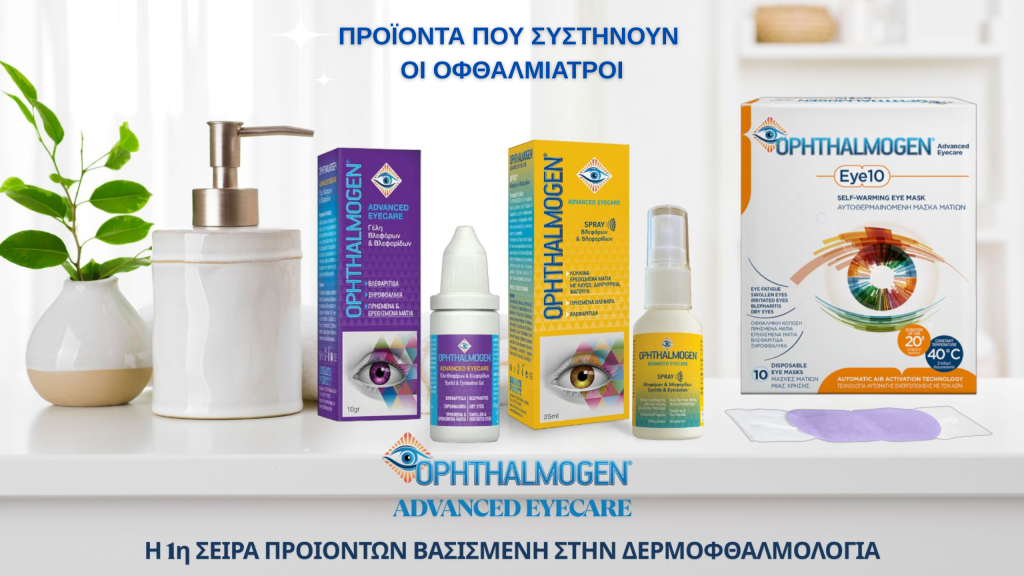
All Ophthalmogen products are available in partner pharmacies
and online at : ofarmakopoiosmou.gr – Ophthalmogen

